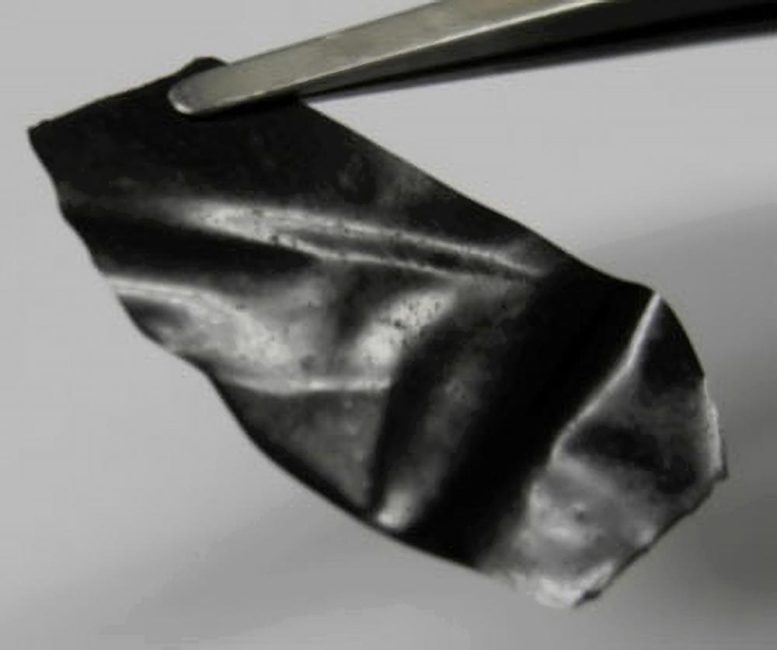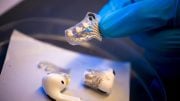
Yale engineers have developed a novel system for producing thin, conductive films. Pictured here, a freestanding carbon nanotube treated with one of the films. Credit: Yale University
Newly published research from Yale University engineers describes a technique that may be influential in developing and understanding new methods for rapidly creating battery electrodes with nanometer-level precision.
Yale engineers have developed a novel automated system for generating strong, flexible, transparent coatings with promising uses in lithium-ion battery and fuel cell production, among other applications.
Until now, the slow throughput of some existing assembly methods has significantly restricted the practical application of these thin, multilayered conductive films.
Led by André Taylor, an assistant professor of chemical and environmental engineering, the Yale team developed a new assembly technique that cuts process time and produces films with both nano-level precision and improved function. The system — called spin-spray layer-by-layer (SSLbL) — generates thin, multilayered films more rapidly than previously possible and with greater control over film characteristics.
The researchers describe their method in a forthcoming issue of the journal ACS Nano.
“There are many applications for the new technique in developing functional nanoscale coatings,” says Forrest Gittleson, a Yale graduate student and member of the research team. “There are [existing] spray-only systems that reduce the assembly time for layer-by-layer films. But our system improves the process time further while also enhancing the ability to tune film characteristics. It makes for a powerful level of control.”
In one example cited in the paper, a sample film was assembled in 54 minutes using the new method. By contrast, the traditional assembly method, known as dip-coating (layer-by-layer), took 76 hours to produce a film with equivalent conductance.
In addition to improving assembly time, the new system also offers superior control over the film’s final thickness and uniformity.
Films containing carbon nanotubes have long been acknowledged as potentially valuable in sensor and electrode applications. But it’s been difficult to achieve uniform conductivity throughout the film using traditional dip methods. The Yale team demonstrates that its method generates a more uniformly conductive film than the dip method, providing superior performance potential.
“Because layer-by-layer assembly can be used with a wide choice of polyelectrolytes and nanomaterials,” says Taylor, “this technique can be used for an extensive variety of applications ranging from ultra-strong materials (stronger than steel) to transparent O2 diffusion barriers, to drug delivery. The next application is up to the imagination of the material designer.”
The researchers assembled ultrathin polymer and nanotube multilayer films, and evaluated them for use as lithium-ion battery electrodes. The technique shows promise in developing a better understanding and method for rapidly creating battery electrodes with nanometer-level precision.
Reference: “Improving the Assembly Speed, Quality, and Tunability of Thin Conductive Multilayers” by Forrest S. Gittleson, David J. Kohn, Xiaokai Li and André D. Taylor, 20 April 2012, ACS Nano.
DOI: 10.1021/nn204384f









Be the first to comment on "Automated System Has Promising Uses in Battery and Fuel Cell Production"